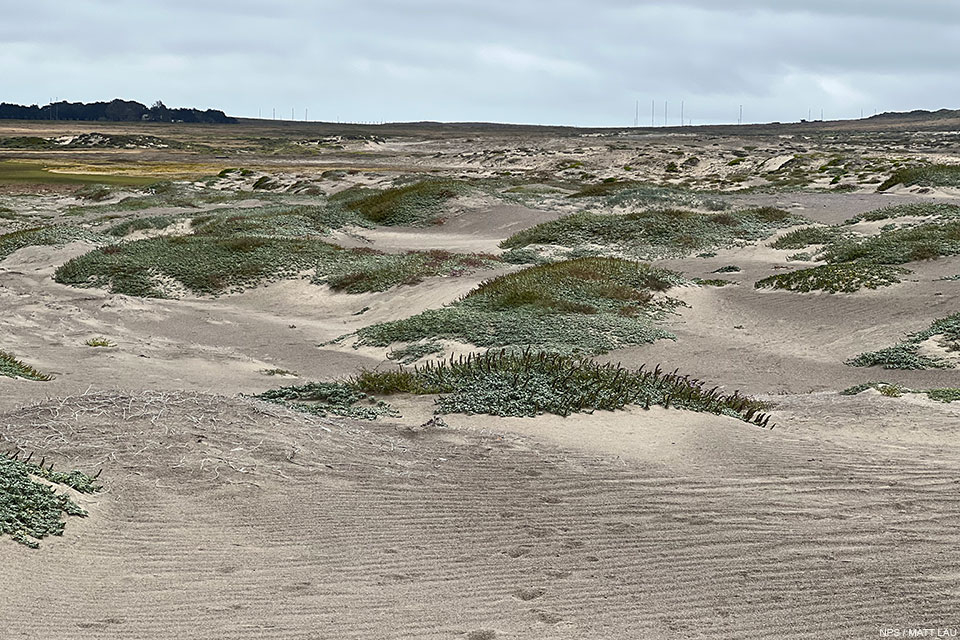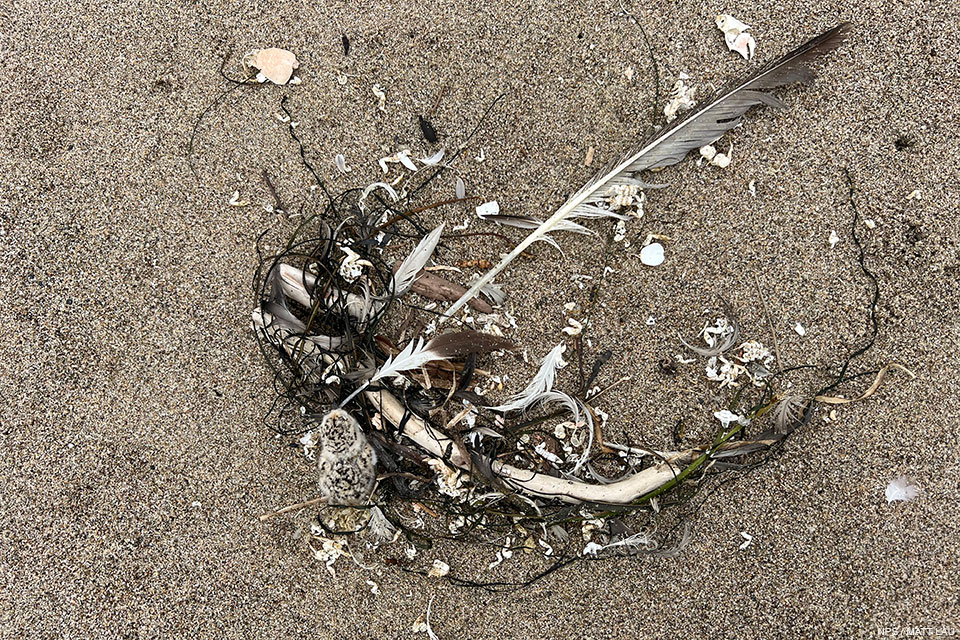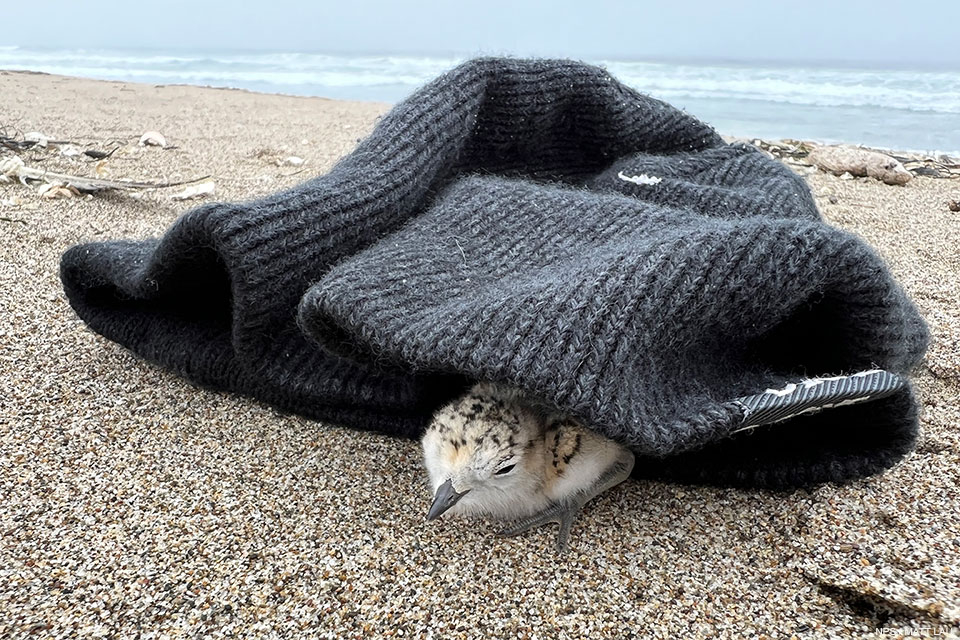Overview
Hello Ploverites!
Like the 2021 season, we found another brood of two western snowy plover chicks from an unknown nest near the Abbotts Lagoon mouth. It wasn't a complete surprise—we suspected there was a banded female that was incubating a nest somewhere in the Abbotts Lagoon restoration area that we were unable to find, but at least the nest survived 28 days to hatch without assistance of an exclosure! The northern Abbotts Lagoon restoration area, informally known as the Abbotts Triangle, is a vast area of native dunes and backdunes along the lagoon shoreline where both nests and broods are capable of hiding from biologists (see the photo below). Adults and hatchlings can easily vanish from the eyes of biologists.
Several broods fledged chicks in the past week, many of which were hiding within the Abbotts Triangle area. Biologists are still working to confirm exactly how many chicks have fledged within each brood, as the adult males have been able to expertly hide and sneak their chicks around the low-lying native dune vegetation, making it difficult for us to ascertain exactly how many chicks they still have in tow.
Here are updates organized by beach sites:
Kehoe (K):
No breeding activity has been detected at this site recently.
Abbotts Lagoon Restoration Area (RA):
There is one active nest along the southwest lagoon shoreline, along with several broods (i.e., males with chicks). A winter flock has formed at the Abbotts Lagoon mouth and they have been observed moving along the beach south and north of the mouth.
Abbotts Lagoon to North Beach parking lot (NP):
Only a single nest remains—one nest hatched this week. Most of the active broods are far north near Abbotts Lagoon.
North Beach (NB):
There hasn't been any breeding activity between North Beach and South Beach parking lots since the start of the season.
South Beach (SB):
No breeding activity has been observed at this site this year.
Limantour (L):
The likely last active nest of the season is still going strong, with the "King" and "Queen" of Limantour incubating. This nest is due to hatch in mid-August, meaning we will be monitoring this brood going into September.
If you have any questions, please feel free to contact Matt Lau, the park's Snowy Plover Ecologist, via email.
CURRENT STATS:
- 33 total nests this season
- 3 active nest
- 20 hatched
- 10 failed nests
- 12 chicks on the beach!
- 15 chicks confirmed fledged
 The habitat of the Abbotts Triangle, a restored backdune along the lower lagoon shoreline, and a perfect place for a male with hatchlings to hide.
The habitat of the Abbotts Triangle, a restored backdune along the lower lagoon shoreline, and a perfect place for a male with hatchlings to hide.
 A snowy plover chick, just a couple days old, expertly hiding among tidal wrack.
A snowy plover chick, just a couple days old, expertly hiding among tidal wrack.
 A snowy plover chick attempting to escape the beanie we use to keep the brood warm while we prepare the banding kit and materials.
A snowy plover chick attempting to escape the beanie we use to keep the brood warm while we prepare the banding kit and materials.
The National Park Service shall not be held liable for improper or incorrect use of the data described and/or contained herein. These data and related graphics (if available) are not legal documents and are not intended to be used as such. The information contained in these data is dynamic and may change over time. The National Park Service gives no warranty, expressed or implied, as to the accuracy, reliability, or completeness of these data. For more information: https://www.nps.gov/disclaimer.htm
